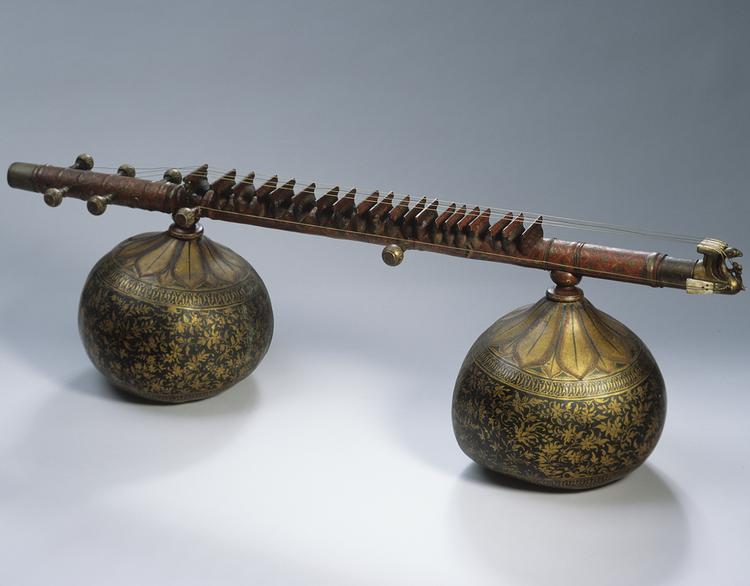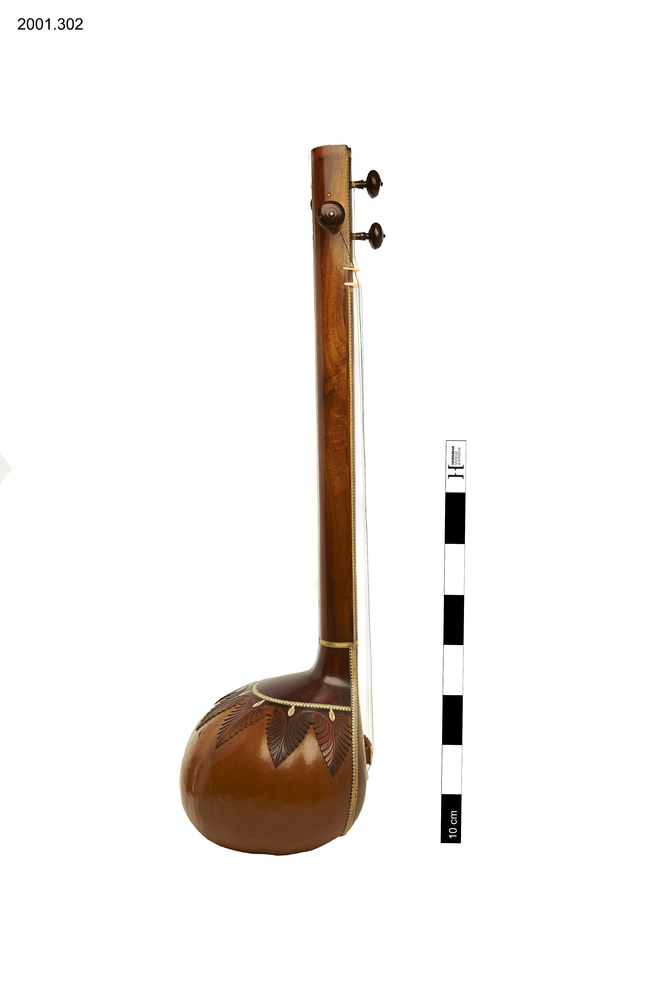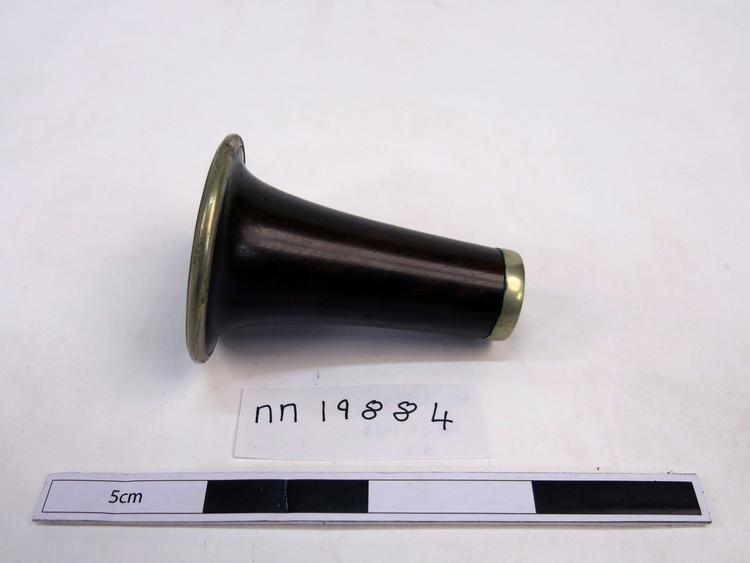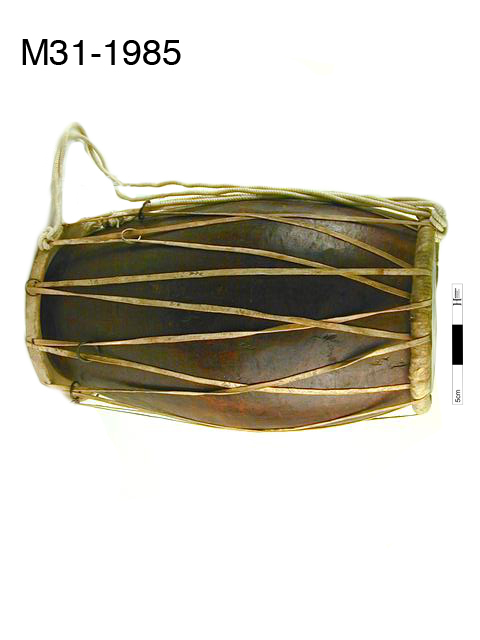Slide trumpet in case. Engraved above the bell garland 'T.HARPER'S IMPROVED MANUFACTURED BY J. KOHLER.', and in a shield on the bell garland 'Henrietta St./Covent Garden/London'.Yellow brass: ornate embossed silver boss, garnishes and bell-garland, the garnishes spiral-fluted with floral design at each end, the boss of flowers alternating the strings, the bell-garland of stylised plume-like leaves. Elastic spring to slide. Five crooks, unmarked but taken to be E, E flat, D, C and B flat. Five bent tuning bits. Mouthpiece of brass with silver rim, likely to be original. In fitted wooden case, felt lined, with maker's card in lid, reading 'Köhler & Son, Military Musical Instrument Makers to Her Majesty's Army & Navy, 35 Henrietta Street, Covent Garden, London'. (This style and address were used 1863-1881)
The slide trumpet was popular in Britain in the 19th century. Its most famous exponents were the father and son, Thomas Harper Senior and Junior. Both were virtuoso soloists on the slide trumpet, and their combined careers spanned the greater part of the nineteenth century. The 'Harper's Improved' trumpet came about as a result of an endorsement contract between Thomas Harper Snr. and the Clementi & Co. musical instrument company, set up by the pianist and composer Muzio Clementi. When Clementi died in 1832, Harper switched his allegiance to Köhler & Sons, who went on to be the most prolific producers of slide trumpets in the history of the instrument. The improvement to the design indicated by the name remains a mystery. The internal spring on the slide return mechanism was a late development (earlier models used clock springs), but the 'Harper's Improved' slogan was in use well before this change, suggesting it was merely an advertising device.


































































































































































































































































































































































































































































































































